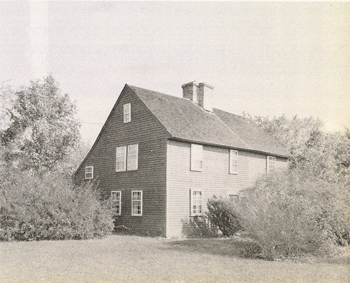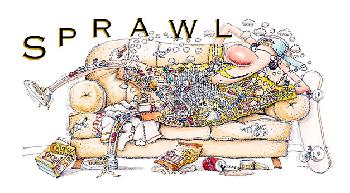 |
 |
||
Liveable Communities, Spring 2008:
|
||||||||
 |
|
| Sun Study Model of Acoma Pueblo. View shows sun's position 10 AM, December 21. No south walls are shaded by adjacent rows of houses. |
|
 |
|
| A Colonial New England "Saltbox" House, Guilford, CT |
|
| Source: Designing & Building A Solar House by Donald Watson. Charlotte, VT : Garden Way Publishing, c1977. |
|
 |
|
| From "Sprawl and Health," NewUrbanism.org |
|
While the study mentioned above did not examine older residential buildings, the comfort, lighting and transportation issues were the same. As a result, site and climate-specific home building was the norm. It was central heating and air-conditioning which made the "location ignorant" concept of residential design possible. As you can see from the discussions in "Vintage Green Windows - Just Add Weatherstripping" and "Controlled Ventilation Starts with the Framing", much of what is inefficient in old houses is fairly easy and undramatic to fix with insulation and air-leak sealing. Furthermore, many of the "new" techniques and materials of green building are rediscovered tradition.
As with any trend, there is an architectural style which has come to be identified with "green," despite the fact that a good deal of it is no more green than what came before, and that some of it is not green at all. While the energy efficiency of the operation of a building is the greatest factor in that building's energy consumption, the energy and impact of construction and demolition are hardly insignificant.
Lastly, the "less advanced" transportation systems of the past encouraged mixed-use and higher density development in close proximity to mass transit. Suburban sprawl is a product of the automobile. As we discussed in "New Urbanism and Infill", it has become clear that this model of development is unhealthy for the planet AND the people who live there. Again, we are relearning the past.
We're not suggesting that we turn our backs on all that has been discovered and developed in the past 100 years, but we do think that respect for the past is warranted. A headlong rush to destroy and dispose of all that's come before will doom us to repeat our past mistakes yet again.
Here's some more information on the topic:
- Historic Preservation and Sustainability, The National Trust for Historic Preservation
- A Cautionary Tale - Amid our green-building boom, why neglecting the old in favor of the new just might cost us dearly, Preservation Magazine
- New Version of LEED to Incorporate Better Metrics for Historic & Existing Buildings by Barbara Campagna, PreservationNation
- Old but green by Sharon Winters, The News Tribune, Tacoma, WA, March 9th, 2008
- Already "Green," Old Houses Can Be Even "Greener" by Elizabeth J. Wheeler, The Historic Genie
At Remodel Guidance, we incorporate green design and features into all our projects. After all, a lot of what's green is simply good building practice. There are always tradeoffs, and we would hesitate to call one specific approach "right" and another "wrong," but it is worth noting that infill and improvement of existing homes in a green way tends to reduce transportation energy intensity, preserve land and reduce sprawl. We consider our work to improve and wisely expand existing housing stock important in providing "green" housing. Can we help you? Please feel free to contact us at (415) 258-4501 or via email at info@remodelguidance.com.
We are sorry if we appear the bearer of bad news, but we want to be "the bearer of important news." The good news is that many of these problems have accessible, affordable and pleasant solutions. Please stay tuned...